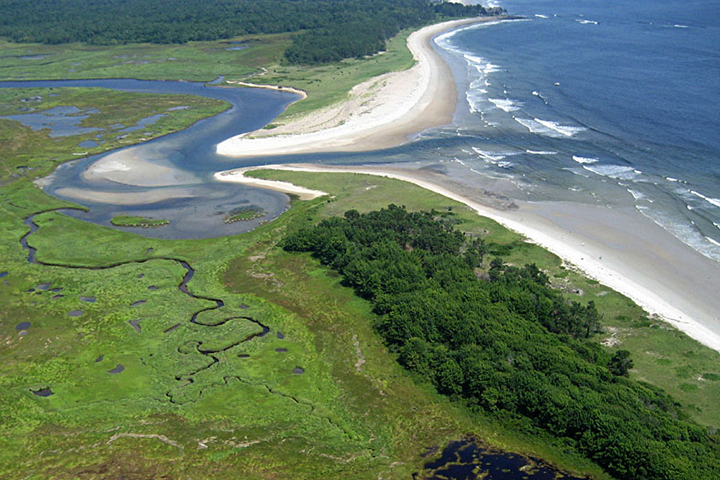Assessing the Impact of Watershed Changes on Estuarine Morphology and Aquatic Life
Assessing the Impact of Watershed Changes on Estuarine Morphology and Aquatic Life
Assessing the Impact of Watershed Changes on Estuarine Morphology and Aquatic Life
Program: Environmental Sustainability Multidisciplinary Research Team (ESMRT)
All Environmental Sustainability Multidisciplinary Research Team (ESMRT) projects »

Photo credit: NOAA
Investigators:
Nikolaos Katopodes - College of Engineering
Valeriy Ivanov - College of Engineering
Paul Webb - School of Natural Resources & Environment
Valeriy Ivanov - College of Engineering
Paul Webb - School of Natural Resources & Environment
Project Summary
Long-term effects of some land use practices can lead to erosion and sedimentation processes that are detrimental to aquatic species and their habitats. Often these processes occur at spatial and temporal scales that are difficult to assess quantitatively. Novel modeling approaches can provide new measures of watershed impacts on estuarine morphology and biota.
The project team developed an integrated watershed-estuarine model to perform a formal sensitivity analysis of estuarine bed morphology to various hydrologic changes at the watershed level. The researchers varied headwater land uses in the watershed model, along with climate variables, and evaluated runoff and erosion processes, which, over long periods, affect the width of beaches, the depth and context of sediments, the cohesion of grain particles, and the overall strength of the soil matrix. Researchers linked the hydrodynamic and soil variables to the aquatic habitat model, resulting in a robust tool for assessing the impacts of climate change and land use practices on individual species. Running the model over long-term periods allowed the researchers to establish quantitative measures of aquatic ecosystem sustainability.
This project received a $169,440 Environmental Sustainability Multidisciplinary Research Team Proposal Grant in 2008.